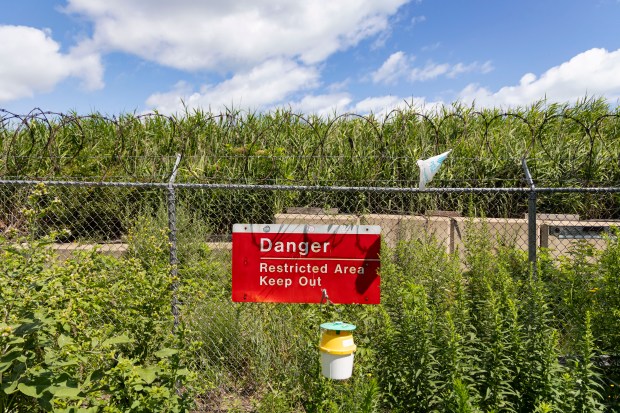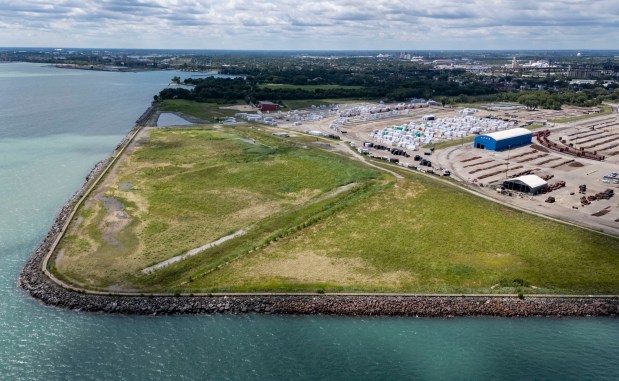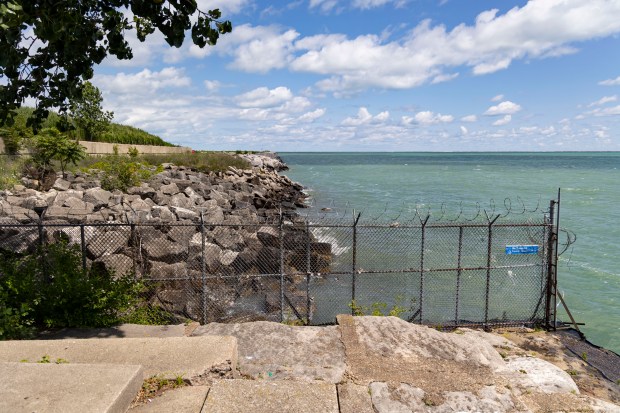Environmentalists were distressed by a U.S. Supreme Court decision last month limiting the power of federal agencies and putting regulations like the Clean Air Act and Clean Water Act at risk.
But in Chicago, the Environmental Law and Policy Center plans to leverage the ruling, commonly referred to as the Loper decision, to protect neighborhoods on the Southeast Side and the Lake Michigan shoreline.
“This is not a good decision by the court. It is ideologically driven to hamstring sensible environmental regulations and agencies that protect public health. However, there’s an opportunity to turn lemons into lemonade,” said Executive Director Howard Learner.
In March last year, on behalf of two community organizations, the center filed a lawsuit against the U.S. Army Corps of Engineers’ plans to expand and continue dumping toxic sediment in a now-full containment site along the shoreline.
The center is using the Supreme Court’s decision, which overturned 40 years of legal precedent called the Chevron doctrine, to support its lawsuit. The doctrine required courts to defer to federal agencies’ interpretations of ambiguous statutes.
However, a July 2 court filing by the plaintiffs said the judge now has full discretion to determine whether the Army Corps overstepped when determining it could keep and expand the dump site, which contains mercury, arsenic and polychlorinated biphenyls.
The plaintiffs would like to see the 43 acres of prime shoreline transformed into a park for the largely Black and Latino, low-income communities on the Southeast Side, as originally promised once the site was full.
“The biggest issue we have, especially when we talk about our shoreline, is that the landfill on the lake is less than three blocks away from (Calumet Park Beach) where our kids go swimming,” said Samuel Corona, 44, a lifelong Southeast Side resident.
Double-edged sword
At the heart of the lawsuit is a disagreement over whether the Army Corps of Engineers adequately assessed the environmental risks of expanding the dump or alternative locations, as required by law, before deciding to expand the current site.
The plaintiffs — Friends of the Park and Alliance of the Southeast — argue the agency did not consider the outsized burden of industrial pollution the Southeast Side has historically endured.
Formerly a hotbed for the steel and petroleum coke industries, the Southeast Side remains an industrial hub: home to assembly plants, scrap processing yards and bulk cargo handling facilities. Since 2014, 75 companies on the Southeast Side have been investigated for noncompliance with the Clean Air Act, and it has Chicago’s only area zoned to store hazardous waste.
The Army Corps has been depositing sediment dredged from the Calumet River and Lake Michigan at the shoreline dump site since 1984. The federal agency promised the lakefront property would be returned to the Chicago Park District when the disposal facility reached capacity or after 10 years, whichever came first.
Forty years later, the site is full but the Army Corps is refusing to let it go. Instead, it plans to raise the dump site 25 feet in the air and extend it 4 acres so it can hold an additional 1 million cubic yards of toxic sediment over another 20 years.
The Army Corps argues, per its interpretation of the Clean Water Act and National Environmental Policy Act, that it completed a comprehensive evaluation of environmental impact and alternative sites before coming to this decision.
The agency declined to comment to the Tribune since the litigation is ongoing.

The plaintiffs and the Army Corps were originally arguing about the degree of deference owed to the agency, an issue courts have commonly taken up, according to Learner.
The recent Loper decision, however, supersedes this debate, the plaintiffs claimed in their July 2 filing. In the 6-3 ruling, the conservative justices ordered courts to rely on their own interpretations of ambiguous laws, rather than defer to topical experts in the U.S. Army Corps of Engineers, Environmental Protection Agency and other executive branch agencies.
Chief Justice John Roberts called the Chevron doctrine “fundamentally misguided” in his majority opinion, saying it allowed agencies to change course unduly. He asserted that courts are responsible for determining whether a law means what an agency says it does.
“There had always been boundaries to deference, but this case sterilized it,” said Learner.
Now, it’s up to the U.S. District Court for the Northern District of Illinois to decide if the Army Corps interpreted the environmental risk evaluation requirements correctly.
This Supreme Court ruling is a “double-edged sword” that can be used to benefit any ideology depending on the makeup of the courts and federal agencies, Learner said.
Environmentalists fear it could make it more difficult for the EPA to limit toxic chemicals in water, protect endangered species and regulate power plant emissions, among other actions.
Ironically, the Chevron doctrine was established in an anti-environmental ruling that upheld a Reagan-era EPA interpretation of the Clean Air Act that eased emissions regulations. However, it later became a target of conservatives wanting to weaken the administrative state.
A long history of pollution

The dump site is less than a mile from the nearest neighborhood and Douglas Taylor Elementary School.
After learning during a community meeting in 2012 how pollution could affect one’s health, Corona, a lifelong Southeast Side resident, decided his 11- and 12-year-old children should move to a less industrial town in Indiana with their mother.
His daughter had recently been diagnosed with asthma, and South Chicago has a higher prevalence of chronic asthma than the rest of the city due to pollution, according to a 2020 study by the Chicago Department of Public Health.
Her condition improved after the relocation, according to Corona.
“How could (my kids) live in a community that keeps getting piled on? How long before we’re buried alive in pollution?” asked Corona, who said he stayed behind to fight the pollution where he grew up. He is currently a community outreach specialist for the Alliance of the Southeast.
Whenever his kids would visit from Indiana, he’d take them to Eggers Grove Nature Preserve a few miles away instead of Calumet Park Beach.
Now that the shoreline dump site is full, he wants the park his community was promised.
Illinois Attorney General Kwame Raoul filed an amicus brief in support of finally turning the shoreline dump into a public park earlier this month, citing the decades of industrial pollution the Southeast Side has disproportionately endured.
Climate change increases risk

Linda Gonzalez, another lifelong Southeast Side resident, worries how severe storms and flooding, which will become more common with climate change, could affect the 25-foot-high structure full of toxic waste the Army Corps plans to build.
“Even today, there’s been flooding and trees down from storms. It’s an ongoing concern,” Gonzalez said last week, after severe thunderstorms July 14. Tornados ripped through the Chicago area hours later.
The Army Corps has not analyzed how adding a million cubic yards of sediment could affect the structural integrity of the containment structure, according to the lawsuit. A leak could contaminate Lake Michigan drinking water with mercury, arsenic and PCBs.
The overall impact of the Supreme Court weakening regulatory agencies and bolstering the courts on environmental regulations remains to be seen. However, given the current conservative leanings of the nation’s courts, the use of the Loper decision to benefit the environment in Chicago is likely to be an exception, said Learner.
Oral arguments in the case will be held at 12:30 p.m. on Aug. 28 in the Dirksen U.S. Courthouse.




